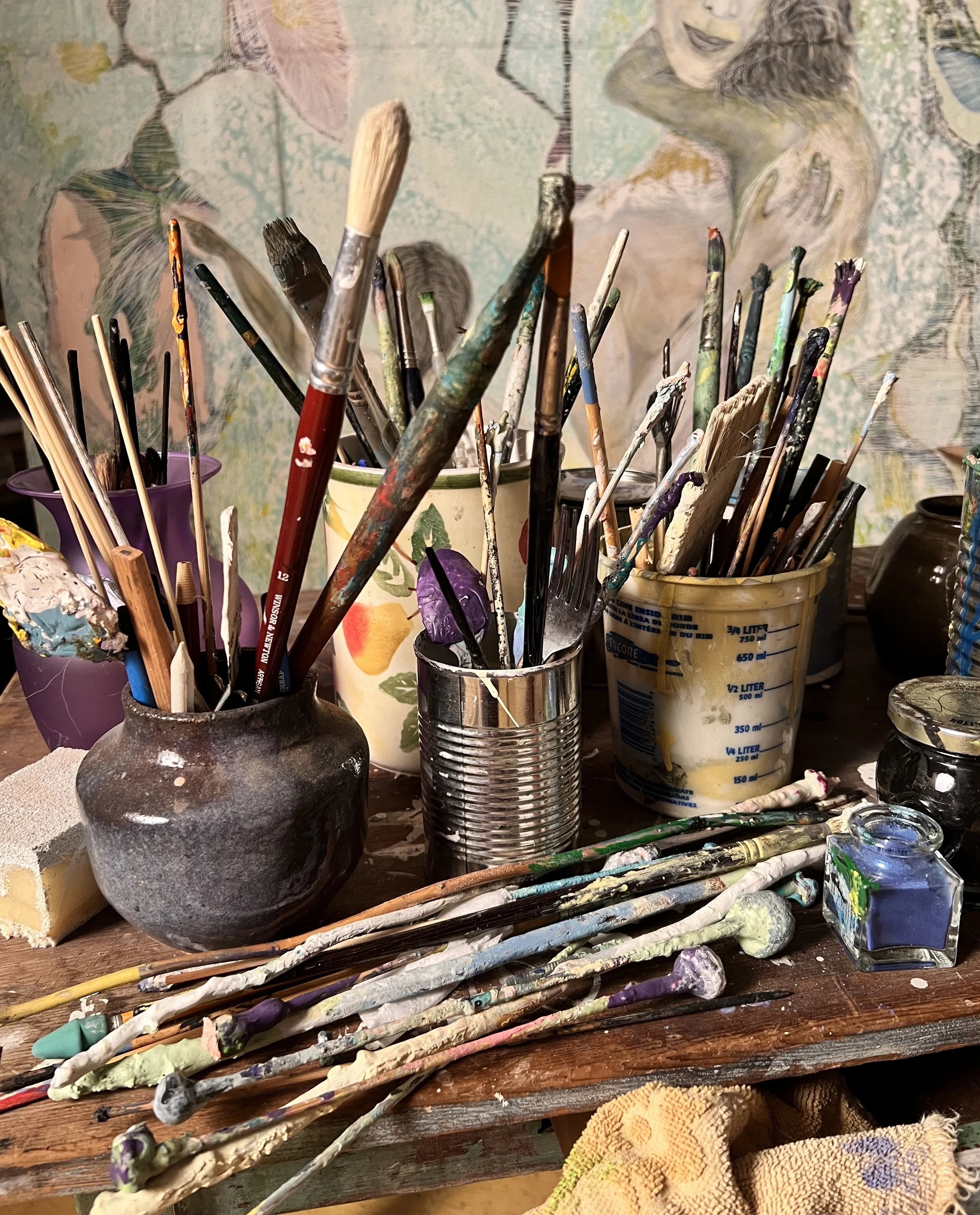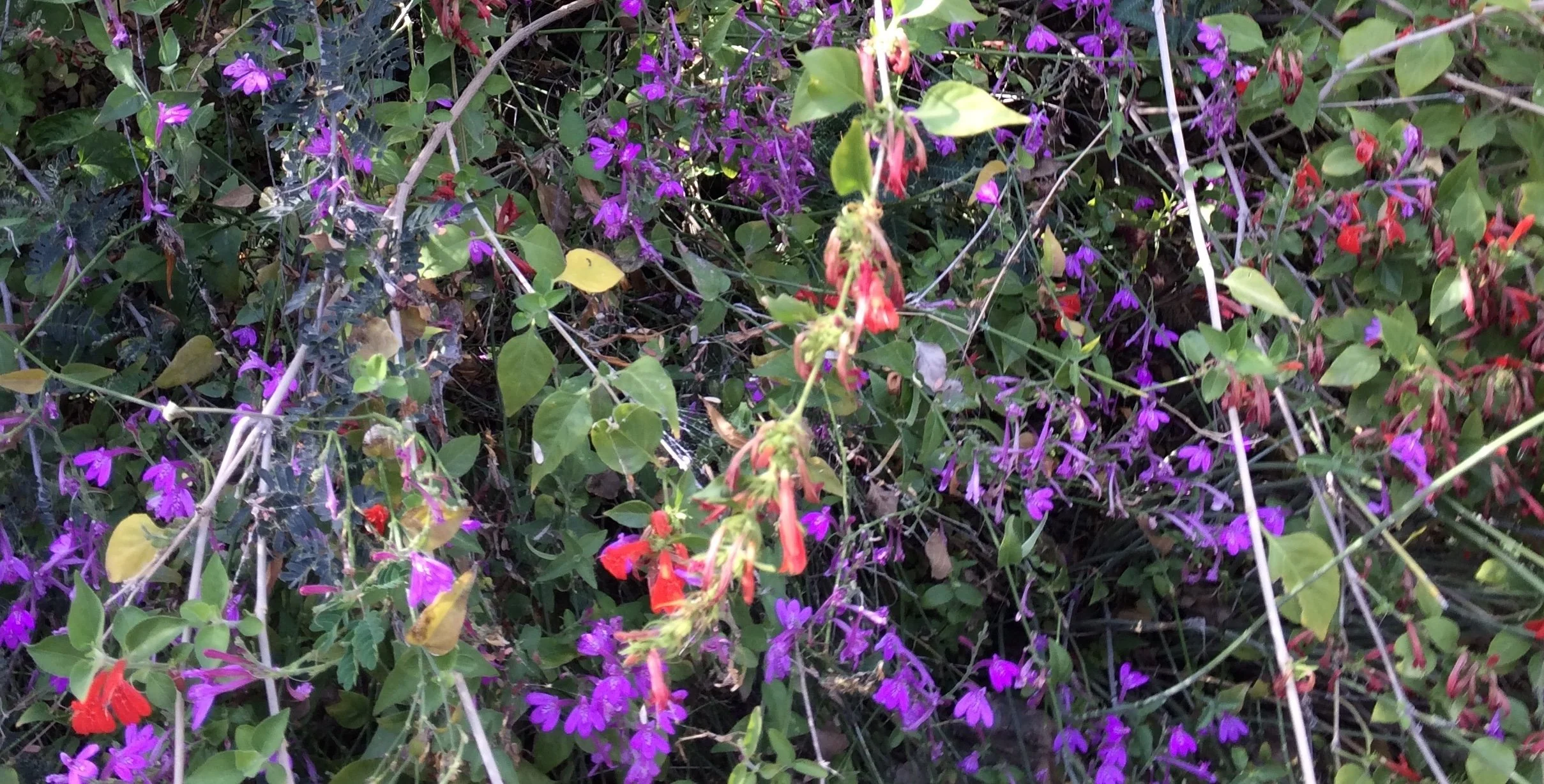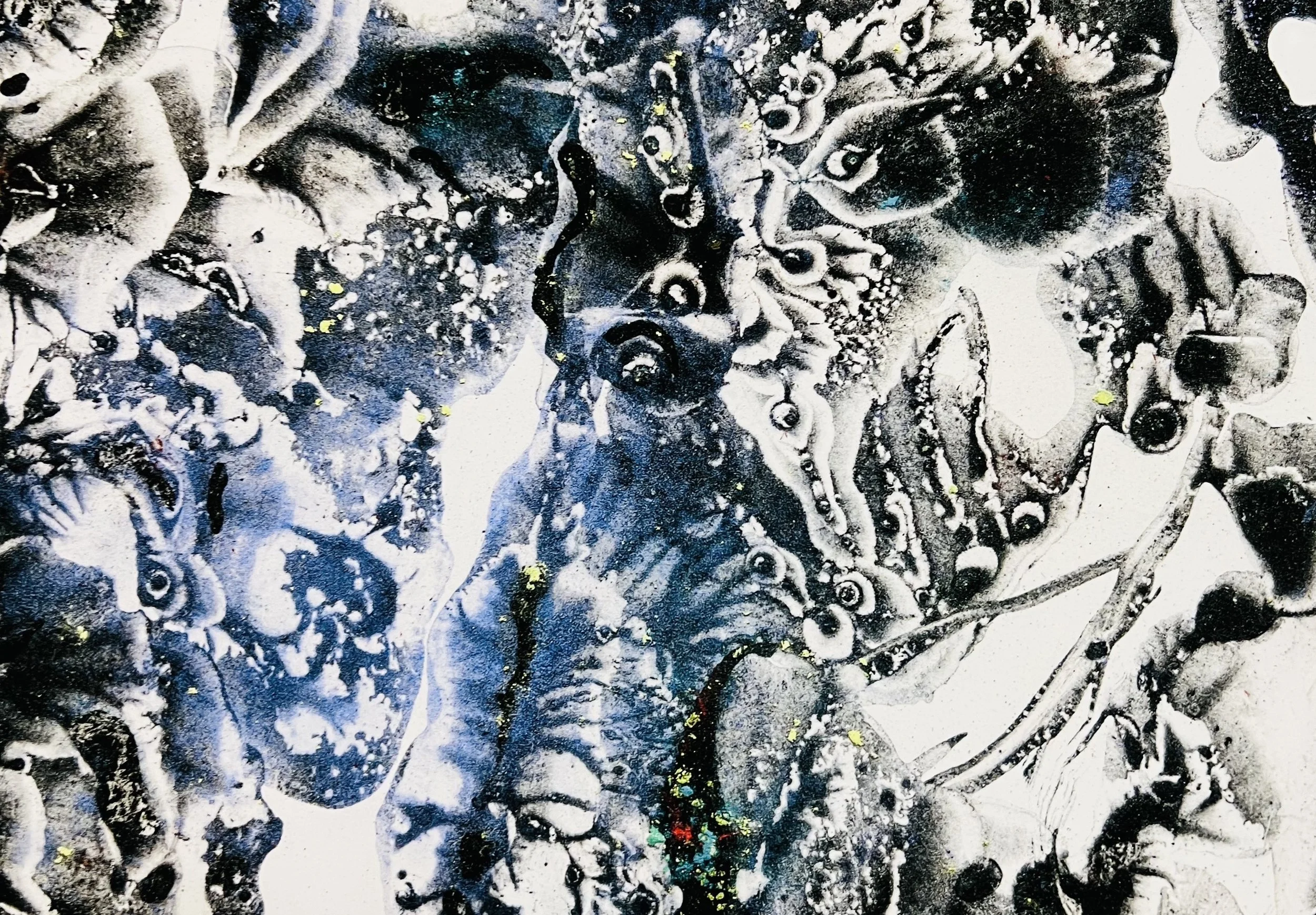Natural Origins
Decades ago, I was welding art on the eighth floor of my studio, a bunker-like space located in a commercial building. I would paint these larger-than-life-size metal sculptures from discarded metal I found, often during dumpster dives, then I'd burn them with the welder to get the exact color and textural effect I wanted.
My face and body were covered in soot all day and I was inhaling burnt paint and unknown chemicals on a regular basis. I knew I had to stop if I didn’t want to kill myself. The medium was especially not a good fit considering my art was about healing and betterment.
It was when I found myself in the canyons of California and the desertscape of Arizona, surrounded by nature, that I began experimenting with ways of creating images using only the available natural elements at hand.
I might use rocks, sand or a stick to etch, buttercups or other flowers, plants and leaves nearby to paint. It wasn’t a new concept. This approach to art had been done since ancient times, but it was a huge paradigm shift for me.
I researched what various indigenous artisans have used to create art for centuries and discovered they still use a large variety of natural materials to this day. Eventually, I started to experiment and make my own dyes and pigments with sources provided by nature. It also intrigued me that specific elements can carry an intrinsic meaning that then merges into, and deepens the art in creation.
Over the years, through numerous bodies of work, it has evolved into incorporating different powdered gems, minerals, stones, and earth from around the world, joining the inks and dyes that you see in my current series, ECOLOGY OF ONE.
Detail, Blue World, Ecology of One series, crushed gemstones, minerals, & organic ink, paint. (2022)




